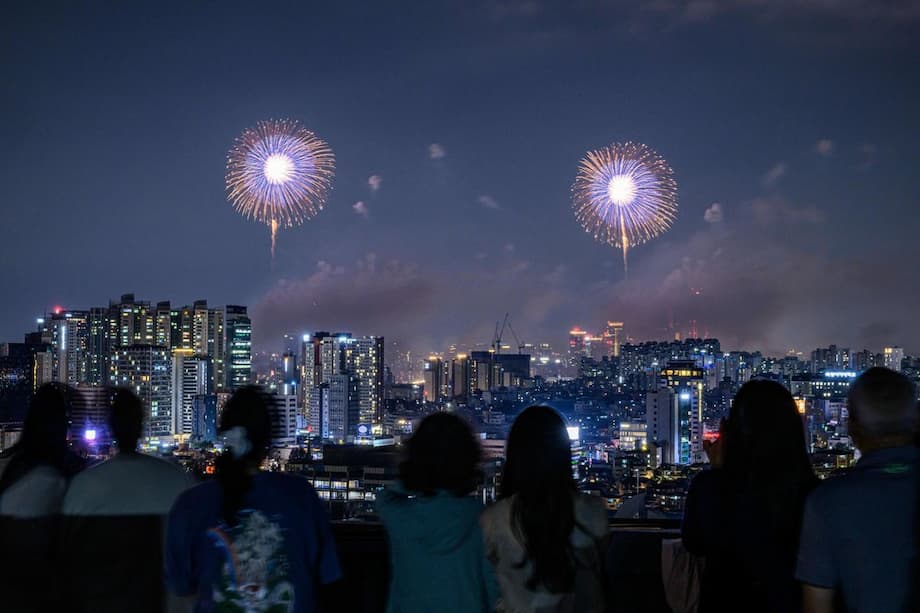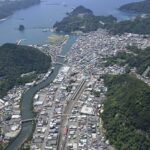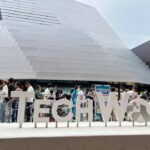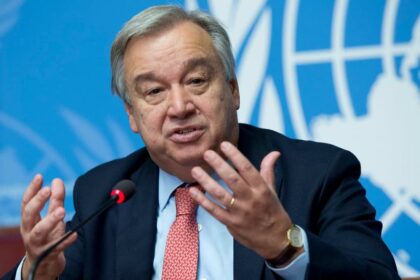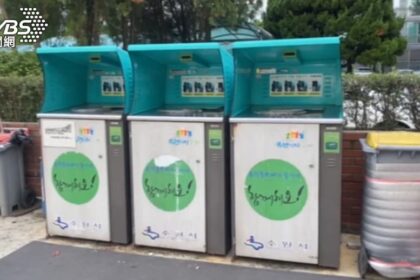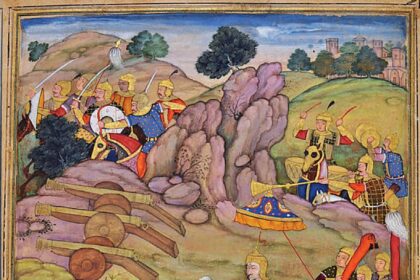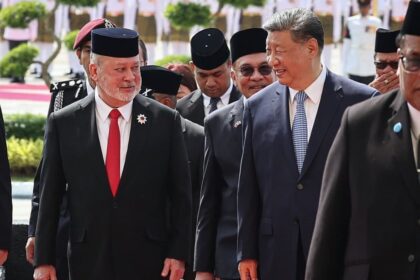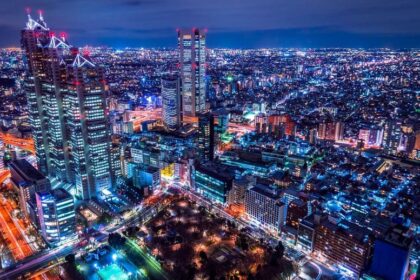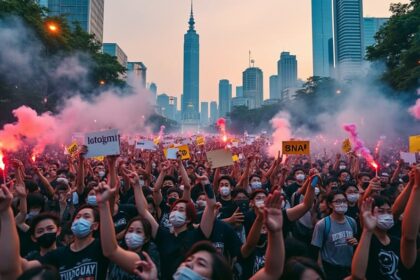A night of color, music and meticulous crowd control
The Seoul International Fireworks Festival returned to Yeouido on Saturday night with a sweeping show of color and sound that drew an estimated one million people to the banks of the Han River. Staged under the theme Light Up Together, the program featured teams from Korea, Italy and Canada, each pairing precision pyrotechnics with carefully chosen music to turn the river corridor into a citywide stage. The finale from the Korean team synchronized hundreds of bursts to Golden, a track from the global hit animation KPop Demon Hunters, capping a program that was as much a concert as it was a fireworks display.
- A night of color, music and meticulous crowd control
- Who performed and what did they bring to the sky?
- How the city handled one million people
- When everything happened on Saturday
- How a modern fireworks show works
- Where to watch without the crush next time
- Staying comfortable and healthy during the show
- Community, cleanup and the festival’s place on the calendar
- Key Points
City authorities mounted one of the largest crowd management operations of the year. Police deployed roughly 3,400 officers around Yeouido and along nearby bridges and river parks. Aerial monitoring near Yeouinaru Station helped track congestion in real time, and trains on Subway Line 5 skipped Yeouinaru for about three hours during the peak viewing window to prevent dangerous bottlenecks on platforms and stairs. Yeouidong ro, which runs along prime viewing areas, was closed from 2 p.m. to 10 p.m. Nineteen bus routes were detoured, extra trains were added on Lines 5 and 9, and the Hangang Bus river service was suspended during the event.
The show’s scale matched the turnout. Organizers and media described a finale that fired about 160,000 rounds in roughly an hour, with cascades, peonies and comet effects reflecting off the water between Mapo Bridge and the 63 Building. The festival remained free to attend, with daytime activities from early afternoon and a post show DJ set that extended the celebration well after the last burst faded.
Who performed and what did they bring to the sky?
Three teams took turns shaping the night. Italy’s program, titled Fiat Lux, opened the main event from 7:20 p.m. to 7:35 p.m., leaning into a classic European palette and clean timing to set the tone. Canada followed from 7:40 p.m. to 7:55 p.m. with Super Heros, a playful sequence set to blockbuster themes that pulled cheers from the riverbank crowds. Korea closed from 8:00 p.m. to 8:30 p.m. with a sweeping storyline and a long crescendo anchored by Golden from KPop Demon Hunters, building to a wide, multi layer finale that filled the field of view from bridge to bridge.
Across all three sets, the hallmark was choreography. Firework bursts rose, bloomed and died on cues that matched bass drops, melodic phrases and pauses in the soundtrack. Sequencers and electronic firing racks let designers time shots to split second precision, which produced the illusion of a single, seamless composition despite the handoff among three national teams.
How the soundtrack shaped the choreography
Modern shows are often written like musical scores. Designers select shells and effects for their color temperature, burn duration and height, then align those traits to beats per minute in the soundtrack. A slow string passage is a natural fit for long hanging willow effects, while quick drum patterns pair well with strobes, crackling pistils and rapid fan shots that sweep across the horizon. This year’s theme, Light Up Together, lent itself to layered moments where different colors and rhythms overlapped, creating depth across the sky and over the river’s surface.
How the city handled one million people
Seoul’s plan combined road controls, transit adjustments and on site staffing intended to keep people moving without compressing foot traffic in a few choke points. Yeouidong ro was fully closed from mid afternoon through late evening. Nineteen bus routes were detoured around Yeouido, while service was boosted on 26 routes between 8 p.m. and 10 p.m. for the trip home. Subway operations expanded with 18 additional trains on Line 5 and 62 on Line 9. Yeouinaru Station on Line 5, closest to the riverfront, ran non stop for a period and limited entrances when densities rose. The city also staged 306 safety personnel across 17 nearby subway stations to guide crowd flow.
Water and bridge management were part of the plan. Thirty seven patrol boats monitored activity on the Han. Buses crossed key bridges without stopping between late afternoon and evening, and taxis could not pick up or drop off on bridges with popular viewing points. The Hangang Bus service paused for public safety. Nodeul Island hosted invited single parent, underprivileged and multicultural families for a calmer viewing experience, with access for the general public restricted.
Officials emphasized that the festival’s reputation now rests on its safety record as much as its spectacle. Kim Taehui, director of the Seoul Metropolitan Government Culture Headquarters, asked the public to follow guidance and promised a full scale interagency effort to keep the event orderly.
We will mobilize all administrative resources to ensure that this year’s festival concludes safely.
When everything happened on Saturday
The festival ran as an all day experience. Citizen programs started at 1:00 p.m., with welcome remarks at 7:00 p.m. The main fireworks sequence followed this timeline: Italy from 7:20 p.m. to 7:35 p.m., Canada from 7:40 p.m. to 7:55 p.m., then Korea from 8:00 p.m. to 8:30 p.m. An after DJ performance kept the atmosphere lively from 8:30 p.m. to 9:30 p.m. Volunteers joined a Clean Campaign from 8:30 p.m. to 10:50 p.m., collecting litter and restoring the parks for Sunday visitors. Admission was free, and the main venue stretched across Yeouido Hangang Park and nearby riverfront areas.
How a modern fireworks show works
Today’s large festival displays are precision engineered. Crews lay out racks on barges and on the riverbank, then wire each shell to an address on an electronic firing system. A time coded file links each firing channel to a marker in the soundtrack. When the music plays, the controller sends firing signals that ignite lifting charges. Each shell carries a timed fuse that burns as the shell rises, then transfers fire into the burst charge at a planned height. The result is a series of blooms that appear to touch musical notes in real time, even though each effect left the mortar seconds earlier.
Designers create depth with layers. Big shells, often six inches and above, break high and wide. Smaller shells and cakes fill the mid field. Near ground effects like comets, mines and fountains build texture close to the horizon line. Over water, reflections double the visual impact, which is why shows on a river or bay feel especially expansive. Safety is built into the plan. Launch zones are kept clear by distance rules, fire crews patrol perimeters, and barges provide separation from viewing areas.
Why viewers hear the boom after the bloom
Light reaches your eyes almost instantly, while sound travels roughly 343 meters per second in air. That is why the bright flash of a burst arrives first, followed by the thump rolling across the river. The larger the shell and the farther the distance, the longer that gap feels.
Where to watch without the crush next time
Yeouido delivers the closest view, yet plenty of alternatives offer comfort with a clear line of sight. If you prefer fewer people and a bit more space, consider these spots that locals recommend:
- Ichon Hangang Park in Yongsan District, a straight shot toward the show across the water
- Yanghwa and Banpo Hangang parks, with room to spread out a picnic mat
- Seonyudo Park and Nodeul Island, both central and scenic
- Mapo Bridge or the southern end of Wonhyo Bridge for a quick riverside walk and unobstructed views
- Sayukshin Park, Noryangjin Soccer Field and the Noryangjin Fisheries Wholesale Market area in Dongjak District
- N Seoul Tower’s observatory or the Namsan Dulle gil trail for a sweeping panorama from above
For those who want a guaranteed seat, travel providers often sell reserved viewing packages for foreign visitors, with preassigned seats inside designated zones. Livestreams on the host’s official channel are another option if you want to enjoy the show away from the crowds.
Staying comfortable and healthy during the show
Autumn nights by the river can turn chilly, especially after hours of sitting. Pack a warm layer or a blanket, and keep children and older adults bundled since body temperature control can be harder for them. Warm drinks help. A thermos with ginger or citron tea can make a long wait more pleasant.
Wearing a mask is a simple way to reduce irritation from fine particles released by fireworks. It also helps in dense crowds during entry and exit, when you are shoulder to shoulder with strangers. If a mask feels uncomfortable for the whole evening, consider wearing one when leaving the park and on public transit.
Community, cleanup and the festival’s place on the calendar
The festival has grown into a signature fall tradition since its start in 2000, and it now doubles as a civic exercise in running very large events safely. City departments, police and fire authorities, and Hanwha, the host, operate a joint safety center and share real time data from cameras and drones. After the last burst, about 1,200 Hanwha employee volunteers and city crews fan out to collect trash. Ninety temporary toilets and extra bins were installed at Yeouido and Ichon parks this year to keep facilities usable during the peak. The scale of that cleanup helps the parks open clean on Sunday morning for joggers, cyclists and families.
Seoul’s cultural year is packed, and the fireworks festival sits near the heart of the fall season. The city schedules concerts, arts programs and heritage events through October and November, which means practice gained from managing river crowds carries into other weekends. For visitors weighing a trip, this show offers a vivid snapshot of the city’s energy, its public spaces and its approach to welcoming very large audiences.
Key Points
- About one million people gathered along the Han River for the Seoul International Fireworks Festival in Yeouido
- This year’s theme was Light Up Together, with shows by teams from Korea, Italy and Canada
- Italy performed from 7:20 p.m. to 7:35 p.m., Canada from 7:40 p.m. to 7:55 p.m., and Korea from 8:00 p.m. to 8:30 p.m.
- The Korean finale synchronized with Golden from KPop Demon Hunters
- Police deployed roughly 3,400 officers, and trains on Line 5 skipped Yeouinaru Station for about three hours
- Yeouidong ro closed from 2 p.m. to 10 p.m.; 19 bus routes were detoured; extra trains ran on Lines 5 and 9
- Water safety included 37 patrol boats; Nodeul Island hosted invited families with limited access for the public
- About 160,000 rounds were fired across the program, with large multi layer finales over the river
- Volunteers led a Clean Campaign after the show; 90 temporary toilets and extra trash bins were installed
- Free admission, daytime activities from 1:00 p.m., and a post show DJ performance extended the celebration


